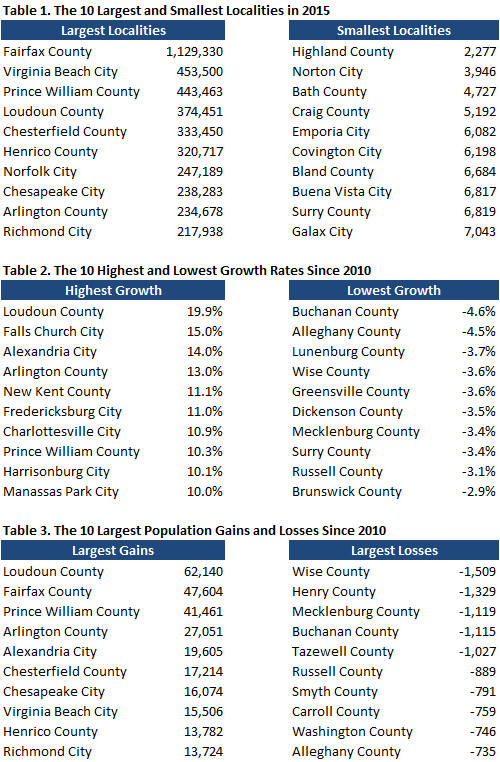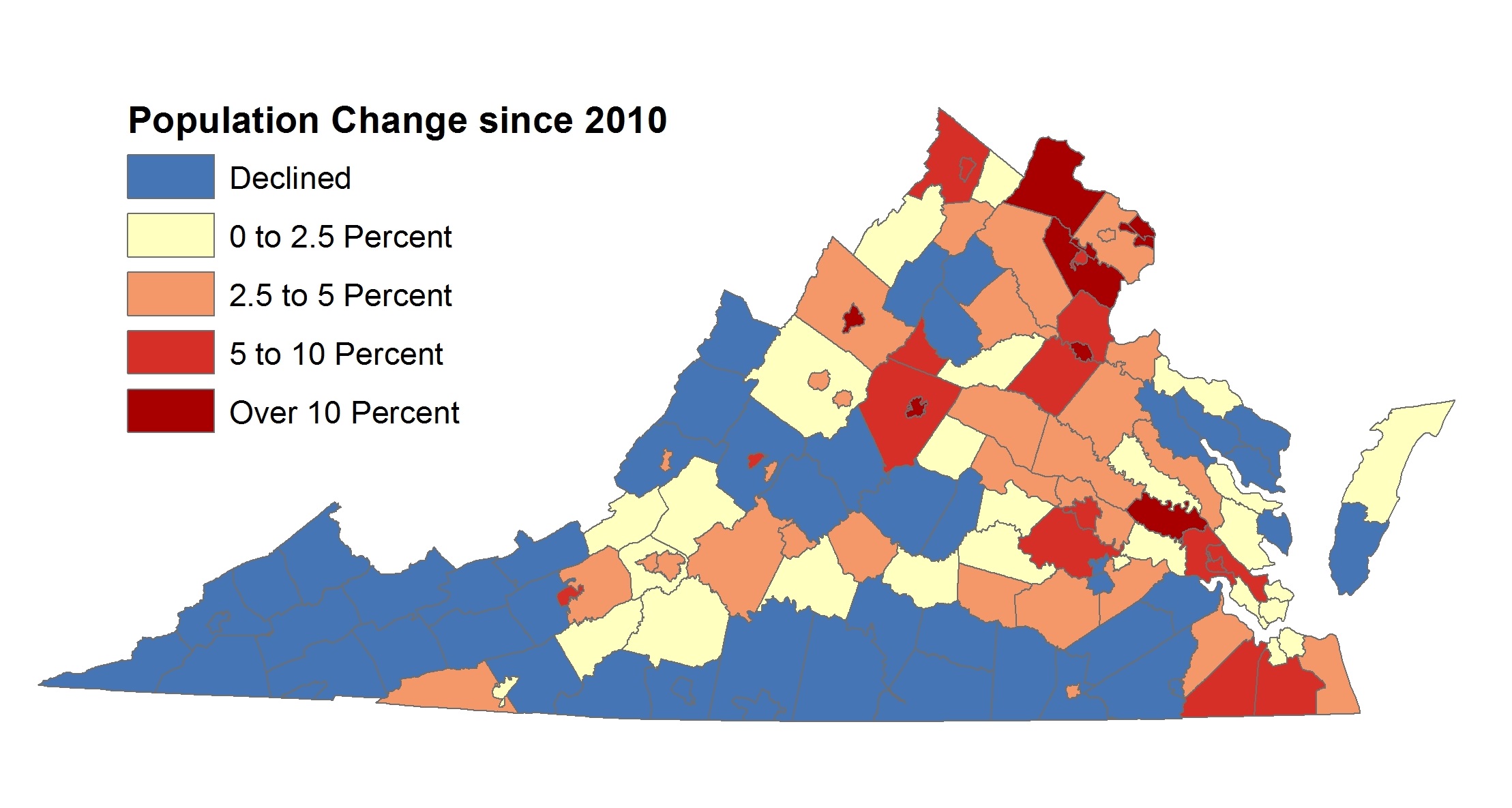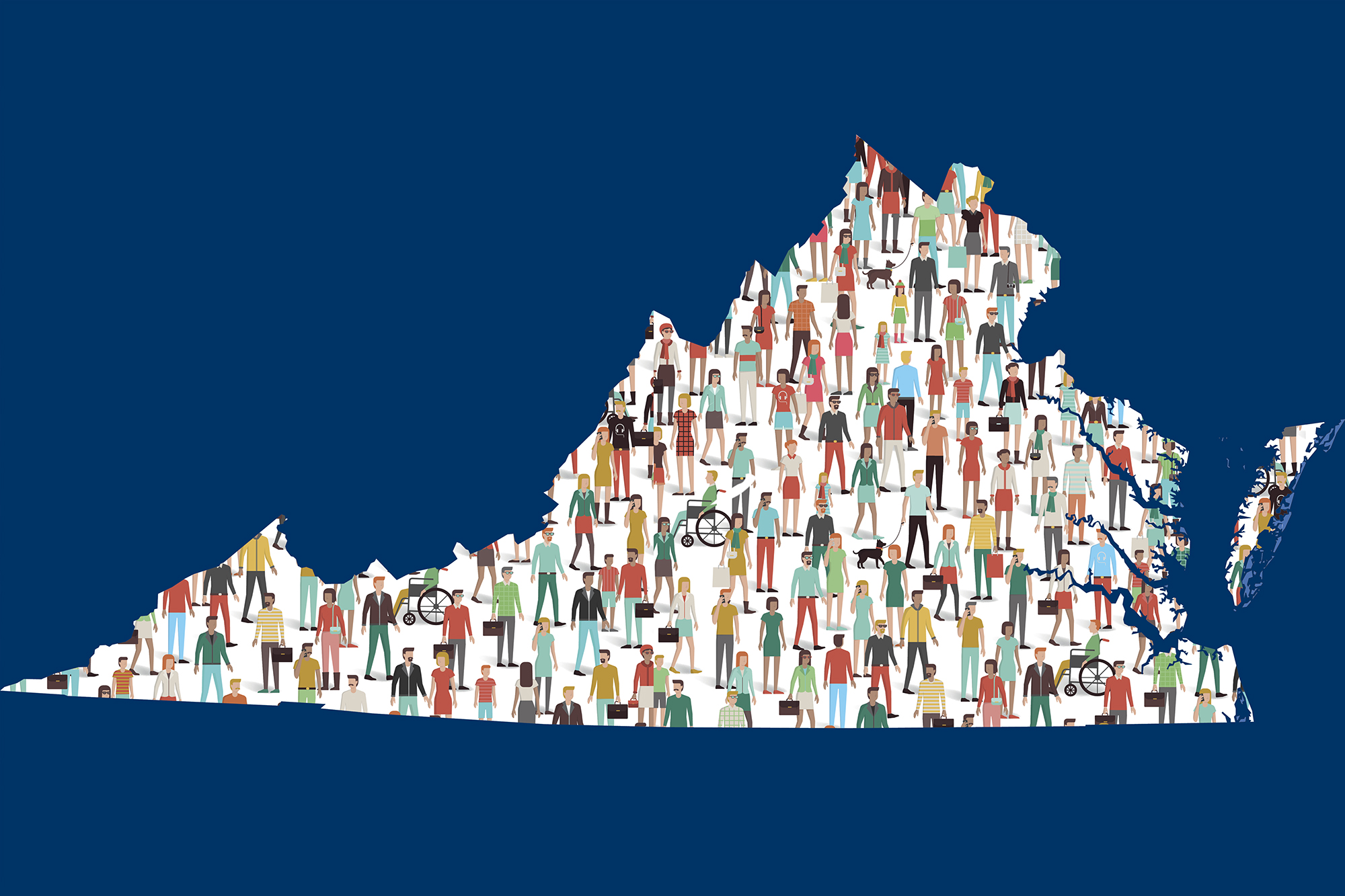Virginia’s population growth has moderated since 2010, with the commonwealth’s total population reaching nearly 8.4 million residents as of July 1, 2015, according to demographers from the University of Virginia’s Weldon Cooper Center for Public Service, which produces the official annual population estimates for Virginia’s cities and counties.
Since the 2010 census, Virginia’s population grew by 4.8 percent, outpacing the national growth rate of 4.1 percent. Virginia remains the nation’s 12th-largest state.
Virginia’s figures represent a decline in the growth rate compared to the previous decade. The slowing growth rate is caused by a combination of factors, including a decrease in the number of people moving into Virginia, an increase in the number of deaths and a declining birth rate.
Since 2010, fewer people moved to Virginia from other states or countries than in the past decade. Migration to Virginia accounts for only 40 percent of population growth, compared to 50 percent a decade ago.

Tables 1-3 show Virginia localities with the greatest rates of growth or decline over the last five years.
“This is a decade of slower growth, both nationally and in Virginia,” said Qian Cai, director of the Demographics Research Group at the Cooper Center. “We expect the trends observed in the first half of this decade will continue.”
Last year’s addition of 76,000 people to the commonwealth’s population is heavily concentrated in the “urban crescent”: nearly 90 percent of the population gains were in the Northern Virginia, Richmond and Hampton Roads metro areas, and the population in most independent cities across the state has increased since 2010.

The map above highlights how different regions of Virginia have grown or declined in population over the last five years.
Outside of Virginia’s three largest metro areas, many rural counties continue to lose population due to fewer births, more deaths and out-migration of the young. Rural communities with slight population growth are typically near urban centers. These communities tend to attract retirees or those close to retiring, which, in turn, adds to the aging population in the area over time.
The Cooper Center’s population estimates, prepared annually, are the official figures for the commonwealth of Virginia. The estimates are based on changes since 2010 in housing stock, school enrollment, births, deaths and drivers’ license issuances. They are used by state and local government agencies in revenue sharing, funding allocations, planning and budgeting.
Media Contact
Article Information
January 26, 2016
/content/state-population-growth-slows-not-cities

